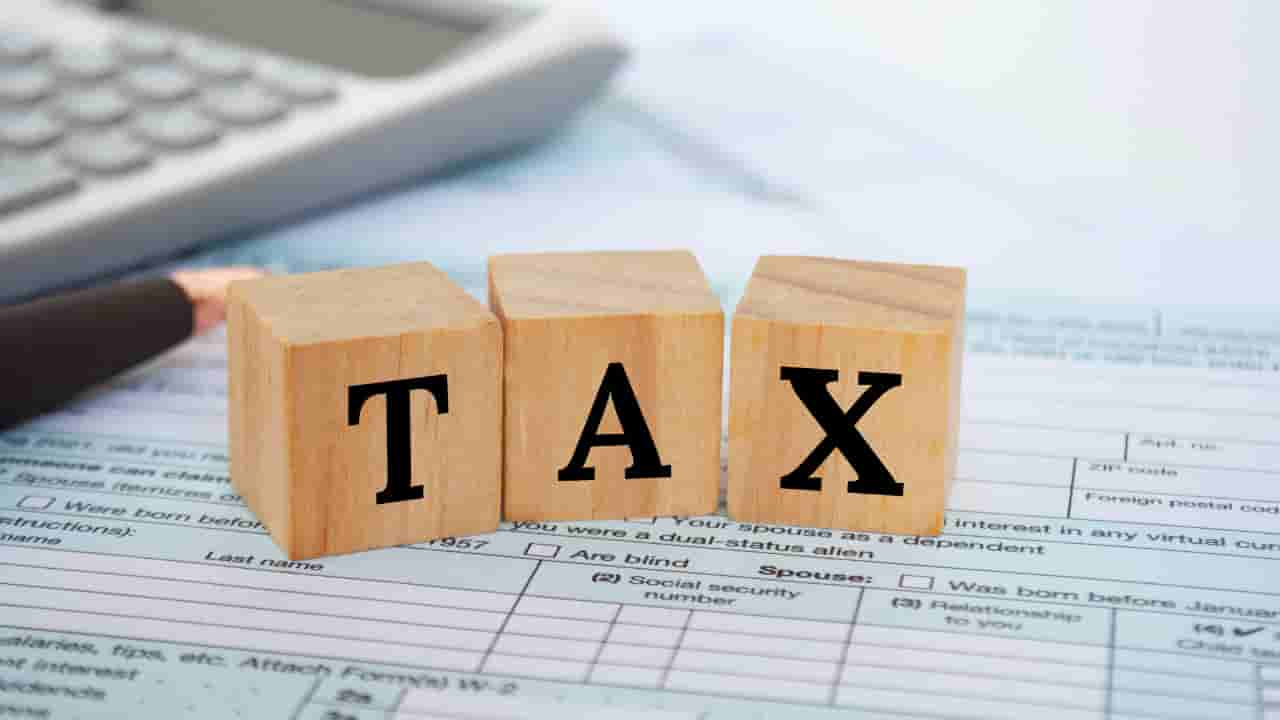

Firstly, it is essential to comprehend what tax credits are: they are benefits that directly decrease the amount of taxes you owe, dollar for dollar. Unlike deductions, which reduce the amount of taxable income, credits reduce your actual tax liability. For self-employed individuals, several specific credits exist that can be particularly advantageous. One such credit is the Home Office Deduction.
Calculating it involves measuring your workspace and determining what percentage it contributes to your home's total area. That percentage then applies to various expenses including mortgage interest or rent, utilities, insurance and repairs. Another valuable credit is the Self-Employed Health Insurance Deduction.
The Retirement Savings Contributions Credit (Savers Credit) is also beneficial as it rewards self-employed individuals who contribute to retirement accounts such as an IRA or a SEP-IRA with a credit up to $1,000 ($2,000 if filing jointly). Furthermore, keep track of all business-related expenses throughout the year; many can be written off come tax time. This includes not just obvious items like office supplies and equipment but also mileage driven for business purposes.
Keeping detailed logs of expenditures and retaining receipts will substantiate claims should questions arise from the IRS. Utilizing accounting software or enlisting professional help from an accountant who specializes in self-employment can ensure that no credit goes unclaimed. To stay current on available credits and deductions specific to self-employment taxes—and any changes that could impact them—it's wise to review IRS guidelines annually or consult with a tax professional.
In conclusion, while dealing with taxes might never become an enjoyable endeavor for most people—including those self-employed—there are ways to ease this burden by leveraging certain tax credits designed specifically for them. It requires diligence and perhaps some outside guidance but positioned correctly; these incentives can lead not just to compliance but also significant savings when managing one's finances as an independent worker. How to Reap Rewards at Tax Time: Your Ultimate Guide to Self-Employed Tax Credits! As a self-employed individual, tax season can be daunting with its myriad of rules and potential deductions. Yet, by delving deep into the realm of tax credits, you can transform this period from a fiscal challenge to an opportunity for financial gain. This essay aims to enlighten you on maximizing your earnings through strategic use of self-employed tax credits.
Unlike deductions which reduce your taxable income, credits directly diminish the amount of taxes owed, offering potent savings. For those navigating self-employment, specific credits are tailored to their unique situations. For instance, the Home Office Deduction is pivotal if you conduct business in your residence regularly and exclusively for work purposes. Calculating this involves either tracking actual expenses or using the simplified method multiplying square footage by a prescribed rate. Health insurance premiums present another avenue for savings, especially since self-employed individuals bear their coverage costs entirely.
Moreover, investing in retirement plans like SEP IRAs or Solo 401(k)s not only secures future stability but also provides immediate tax relief via deductible contributions—thus lowering current year liability while building nest eggs. Education expenses related to maintaining or enhancing skills pertinent to your business might qualify under the Lifetime Learning Credit or even as business deductions; keeping abreast with industry standards simultaneously nurtures professional growth and reaps tax rewards. Self-employment taxes—covering Social Security and Medicare contributions—are another consideration wherein one may claim an adjustment for fifty percent of these paid taxes against income; effectively halving the burden typically shared with employers in traditional employment settings. Maximizing these credits demands meticulous record-keeping throughout the year rather than scrambling during filing season. Store receipts, log miles driven for business purposes using apps designed for such tasks—every document aids in substantiating claims should IRS scrutiny arise.
By capitalizing on relevant deductions—and perhaps consulting with a savvy accountant—you position yourself not merely as someone who endures tax season but one who thrives within it. Knowledge and preparation are key: wield them well to reap bountiful rewards when filing returns as a self-employed professional. How Fiscal Wisdom Pays Off Big Time: Mastering the Art of Self-Employed Tax Credits! Navigating the labyrinthine world of taxes can feel like an insurmountable task, especially for those who have taken the reins of their own income as self-employed individuals. However, with a bit of fiscal acumen, one can not only survive but thrive under the tax system's complex structure.
To begin unraveling this puzzle, it is essential to comprehend that taxes are not merely a government-imposed burden but also offer avenues for savings through various credits and deductions designed specifically for the self-employed. By mastering these financial tools, you stand at the precipice of significant monetary rewards. One fundamental principle in maximizing your tax benefits is to maintain meticulous records. Every receipt, invoice, and statement is a potential key to unlocking tax credits. These documents substantiate your claims and ensure you don't miss out on any eligible deductions that could lower your taxable income considerably. Furthermore, staying abreast of changing tax laws is paramount.
Henceforth, continuous education or consultation with a tax professional can lead to substantial economic advantages. A particularly beneficial area for self-employed individuals is home office deductions. If a portion of your home is used exclusively for business purposes, proportional expenses such as mortgage interest, utilities, and repairs may be deductible. This doesn't mean fabricating uses; authenticity is crucial because discrepancies might invite unwelcome scrutiny from the IRS. Investment in retirement plans presents another fertile ground for reducing taxable income while simultaneously securing future financial stability.
In addition to these strategies lies the potential bounty within health insurance premiums—a cost often borne entirely by the self-employed without employer assistance—but partially recoupable through tax credits if certain criteria are met. Lastly, always consider eligibility for industry-specific credits related to energy efficiency improvements or educational pursuits which further enhance skills pertinent to your business sector. Mastering these aspects of self-employment tax strategy does not result from haphazard chance but from deliberate efforts toward financial enlightenment. It requires dedication to understanding intricate rules and regulations—a daunting yet achievable endeavor—with profound payoffs awaiting those who grasp its nuances: maximized earnings retention leading up directly towards greater economic freedom and prosperity over time. Understanding the Qualified Business Income Deduction (Section 199A)Navigating the landscape of tax regulations can be akin to traversing a labyrinth, particularly with provisions as nuanced as the Qualified Business Income Deduction (QBID), encapsulated in Section 199A of the Internal Revenue Code.
To unravel this Gordian knot, one must first recognize who is embraced by Section 199A's benevolent arms. The deduction primarily benefits proprietors of pass-through entities—such as sole proprietorships, partnerships, limited liability companies (LLCs), and S corporations—as well as certain beneficiaries of trusts and estates involved in business operations. At its heart, QBID permits eligible taxpayers to deduct up to 20% of their qualified business income (QBI) from their total taxable income. QBI embodies the net amount of gains, losses, deductions, and income pertaining to any qualified trade or business. Crucially excluded are capital gains or losses, dividends, interest income not connected to the business's ordinary course, and wage income received from an S corporation.


The intricacies deepen when dissecting what constitutes a "qualified trade or business." Under Section 199A’s terms , any enterprise conducted in the United States may qualify except for specified service trades or businesses (SSTBs) such as law practices or health services when taxpayer incomes exceed certain thresholds. These thresholds themselves present another variable in our equation. For single filers with incomes below $164,900—or $329,800 for married couples filing jointly—the full deduction is available without complication. As incomes ascend beyond these limits into phase-out ranges ($214,900 for singles; $429,800 for joint filers), complications multiply like hydras' heads: SSTBs begin losing eligibility while non-SSTB enterprises face intricate calculations involving wages paid and property invested.
Unless legislative extensions are granted , post-2025 will witness QBID fading into oblivion like ancient myths . In conclusion , understanding QBID requires diligent study bolstered by professional advice . While it offers significant potential savings , complexities abound . Navigating its labyrinthine rules demands attention lest one encounters Minotaurs rather than muses within its passages .
One such beacon of relief in this complex landscape is the Home Office Deduction—a provision designed to alleviate the financial burden borne by those who utilize a portion of their residence for business purposes. To qualify for this deduction, stringent criteria must be met. Foremost, the space designated as a home office must be exclusively and regularly used for conducting business activities. This means that if your office doubles as a guest room or personal gym, it may not pass muster under IRS scrutiny.
While occasional trips to meet clients or vendors elsewhere are permissible, your home office should remain the epicenter of your professional operations. Calculating the deduction involves two primary methods: simplified and regular. The simplified option offers a standard rate multiplied by the square footage of your office (up to 300 square feet), while the regular method requires itemizing direct and indirect expenses related to home office use—ranging from mortgage interest and property taxes to utilities and repairs. It's imperative to maintain meticulous records substantiating these expenditures; any lapse in documentation could undermine potential savings during an audit.
Furthermore, understanding limitations on carryovers and how they intertwine with net income from your business can influence the efficacy of claiming this deduction. In conclusion, while navigating tax codes can resemble deciphering an arcane language, grasping and utilizing provisions like the Home Office Deduction empowers self-employed professionals with tools to lessen their tax liabilities effectively. By adhering strictly to IRS standards and maintaining rigorous records, you can transform part of your domestic haven into a bastion against excessive taxation—a small victory in mastering personal finance's multifaceted domain. Eligibility Criteria for Self-Employed Tax CreditsNavigating the intricate web of tax law, self-employed individuals must diligently assess their own qualifications for potentially lucrative tax credits. These financial incentives are designed to alleviate the burden of taxes on those who work independently, but understanding and meeting the eligibility criteria is paramount.
This includes profits from sole proprietorships, partnerships, and certain types of corporations where personal services significantly contribute to revenue generation. It excludes passive income streams like rental property returns or investment dividends which are not considered active business engagements. Subsequently, the nature of expenses incurred during business operations becomes pertinent. To claim deductions against taxable income, these costs should be both ordinary and necessary within your trade or profession's context.
Additionally, self-employment tax credit eligibility requires meticulous record keeping. The Internal Revenue Service mandates comprehensive documentation supporting all claims made on tax returns. Receipts, invoices, mileage logs for business-related travel – such evidential materials serve as proof that expenditures claimed align with legitimate professional requirements. Moreover, various specific credits target different objectives set forth by tax policy makers: incentivizing retirement savings through contributions to SEP IRAs or solo 401(k)s; offering relief via the Earned Income Tax Credit (EITC) for low-to-moderate earners; underpinning healthcare accessibility through Premium Tax Credits when purchasing insurance via marketplace exchanges; encouraging educational advancement with deductions for tuition fees and other related expenses.
Adequately estimating these payments ensures avoidance of underpayment penalties while optimizing cash flow throughout the fiscal year. Lastly, staying abreast of legislative changes is crucial since eligibility parameters can shift following new laws or adjustments to existing ones. Engaging with a knowledgeable accountant or utilizing reputable tax software can facilitate compliance while capitalizing on all available credits. In summing up this complex landscape: Success in claiming self-employed tax credits hinges on satisfying definitive guidelines about income sources and expense nature while maintaining stringent records and remaining vigilant about ever-evolving tax regulations.


Maximizing Vehicle and Mileage Deductions as a Self-Employed IndividualAs a self-employed individual navigating the labyrinth of tax regulations, harnessing vehicle and mileage deductions can significantly attenuate your taxable income. Understanding the nuances of this process is critical for ensuring you are not inadvertently leaving money on the table. To commence, it's imperative to choose between two distinct methods: the Standard Mileage Rate or Actual Expenses. The former simplifies record-keeping by allowing a predetermined amount per mile driven for business purposes, adjusted annually by the IRS.
The choice between these methodologies should be predicated on which yields higher deductions for your unique circumstances. For instance, a car with high operational costs might favor Actual Expenses while those driving considerable distances may benefit from the simplicity and potential savings offered by the Standard Mileage Rate. Regardless of method chosen, scrupulous record-keeping is indispensable.
Such diligence ensures that if audited, you have incontrovertible evidence substantiating your claims. Moreover, it's essential to comprehend that only business-related travel qualifies; commuting from home to office does not apply. However, drives between job sites or errands pertaining directly to your enterprise are deductible.
Procrastination in documenting or filing can lead to missed opportunities for maximizing deductions. In conclusion, maximizing vehicle and mileage deductions demands an informed decision between Standard Mileage and Actual Expenses methods followed by rigorous tracking and timely reporting of applicable expenditures. This strategy will not only optimize your tax return but also fortify your financial acumen as a self-employed professional navigating through complex taxation pathways.
Health Insurance Premiums Deduction for the Self-EmployedWhen venturing into the realm of self-employment, myriad financial responsibilities emerge, not least of which involves securing health insurance. Navigating this landscape can be daunting, but one beacon of solace for the self-employed is the ability to deduct health insurance premiums on their tax returns. This deduction stands as a substantial benefit, alleviating some fiscal strain and underscoring government recognition of the importance of accessible healthcare for all working individuals. The Internal Revenue Service (IRS) stipulates that self-employed individuals—who do not have access to an employer-sponsored health plan—may qualify to deduct 100% of their paid health insurance premiums from their gross income. This encompasses plans covering medical, dental, and long-term care insurance for themselves, their spouses, and dependents.
To qualify for this deduction, one must meet specific criteria: having a net profit reported on Schedule C or F if you're a sole proprietor or farmer; being a partner with net earnings from self-employment reported on Schedule K-1; or receiving wages from an S corporation in which you own more than 2% of shares. Moreover, the premium amounts cannot exceed earned income from the business underpinning the insurance plan. However, should you be eligible for enrollment in a subsidized health plan through your spouse's employer—regardless of whether you partake—the option to deduct your own premiums vanishes. This nuance emphasizes the need for careful consideration when choosing between individual coverage and spousal benefits.
It provides an avenue to reduce adjusted gross income (AGI), potentially influencing eligibility for other tax credits and deductions tied to AGI thresholds. Strategically managing finances forms part of the bedrock upon which successful self-employment is built. The Health Insurance Premiums Deduction serves as one such strategy—a testament to policy designed with freelance vitality in mind. As legislation evolves and healthcare costs continue climbing skyward, understanding these provisions becomes increasingly critical in safeguarding both physical well-being and entrepreneurial vigor.
Self-employment brings with it the dual role of both employer and employee, which significantly influences retirement planning strategies and potential fiscal advantages. When considering retirement plans, self-employed persons should meticulously explore options such as SEP IRAs (Simplified Employee Pension Individual Retirement Arrangements), Solo 401(k)s, and SIMPLE IRAs (Savings Incentive Match Plan for Employees). Each plan offers unique features tailored to different business sizes and income levels, thereby allowing entrepreneurs to select a model that best aligns with their financial objectives. SEP IRAs stand out for their simplicity and high contribution limits.
